What Are the Most Affordable SR22 Insurance Options?
Finding the most affordable SR-22 insurance options can feel like maneuvering through a labyrinth. With various providers and rates across states, it's essential to analyze your choices carefully. For instance, Progressive and State Farm offer competitive pricing, but regional insurers might present even better deals. To secure the best coverage at the lowest price, you'll need to compare quotes strategically. Which companies might surprise you with their rates?
When you find yourself needing SR-22 insurance, often after a serious driving infraction, understanding your options can save you both time and money. SR-22 insurance is specifically designed for high-risk drivers, ensuring they maintain liability coverage after incidents like DUIs. The costs associated with SR-22 can vary greatly based on factors such as your state, driving record, and the level of coverage you choose. Typically, coverage limits include $30,000 for personal injury per person, $60,000 per accident, and $15,000 for property damage. Additionally, expect filing charges ranging from $25 to $50, which some insurers may charge for the SR-22 filing itself. SR-22 insurance must be maintained for a specified period, typically three years, to avoid further penalties.
Understanding your SR-22 insurance options can save time and money after a serious driving infraction.
Several insurance providers offer competitive rates for SR-22 insurance, making it important to shop around. Companies like State Farm and Progressive are popular choices. State Farm averages $158 per month for full coverage SR-22 insurance, while Progressive charges approximately $107 for liability coverage after substantial violations. Country Financial also provides an affordable option, with rates around $136 for non-DUI drivers. Remarkably, USAA, available only to military members, offers relatively affordable SR-22 insurance, demonstrating that exclusivity can still yield competitive pricing. For those in specific regions, companies like Erie and Auto-Owners may present even cheaper rates.
If you're in California, the landscape of SR-22 rates shifts slightly. CSAA offers the lowest minimum coverage at $40 per month, while National General leads in full coverage at $127 monthly. Farmers Insurance provides the most economical non-owner SR-22 option at $62. The average cost for minimum coverage in California is around $125, with full coverage reaching about $302. It's essential to keep in mind that rates can fluctuate greatly depending on your county, as seen when comparing urban areas like Los Angeles to smaller regions like San Diego. Moreover, maintaining continuous coverage is mandatory during the SR-22 period to avoid penalties.
When evaluating the national average for SR-22 insurance, State Farm stands out with monthly costs around $127, which is remarkably 51% cheaper than the national average of approximately $2,019 annually. Progressive's rates hover around $1,286 per year, while USAA charges about $1,316, again limited to military personnel. These numbers highlight the potential for considerable savings if you take the time to compare quotes from various providers.
For those needing non-owner SR-22 insurance, Farmers Insurance again emerges as a cost-effective choice at $62 per month. This type of coverage is particularly beneficial for individuals without a vehicle but who still require liability insurance. It typically covers third-party injuries and property damage, making it a smart, budget-friendly option for many drivers.
Ultimately, several factors influence your SR-22 rates, including your driving history, coverage levels, and location. Understanding these variables can help you make informed decisions, ensuring you find the most affordable SR-22 insurance that meets your unique needs.
Conclusion
When it comes to finding affordable SR-22 insurance, it's essential to compare quotes from various providers. While companies like Progressive and State Farm offer competitive rates, regional insurers like Erie and Auto-Owners might surprise you with even better deals. Remember, shopping around is like fishing; you won't catch the biggest fish unless you try different spots. So, take the time to explore your options and secure the best coverage at the lowest cost.





